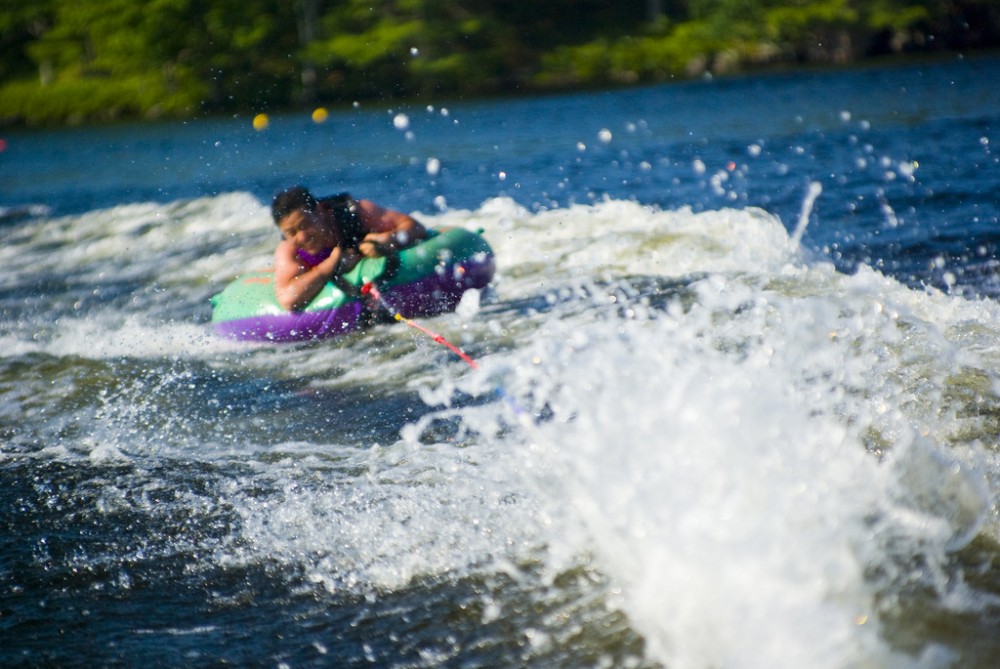Advertisement
Advertisement
How to Kneeboard
If you can survive your first wipeout, then you have what it takes to enter into the world of watersports—and there’s no better place to start than on a kneeboard.
March 8, 2022
An ode to kneeboarding...
I have a love for water and a love for sport,
Tubing, wakeboarding and others of sort.
Yet one true love still holds my heart,
Kneeboarding is how I got my first start.
A little girl and watersports, it was just the beginning;
But wipeout after wipeout left my head spinning.
On again, off again, I kept on falling;
Would I ever catch on, my motivation was stalling.
You’ll get it, you’ll get it, just one more try;
With a big deep breath, I let out a sigh.
The boat sped forward and the rope pulled tight,
I hopped right up—I won the fight.
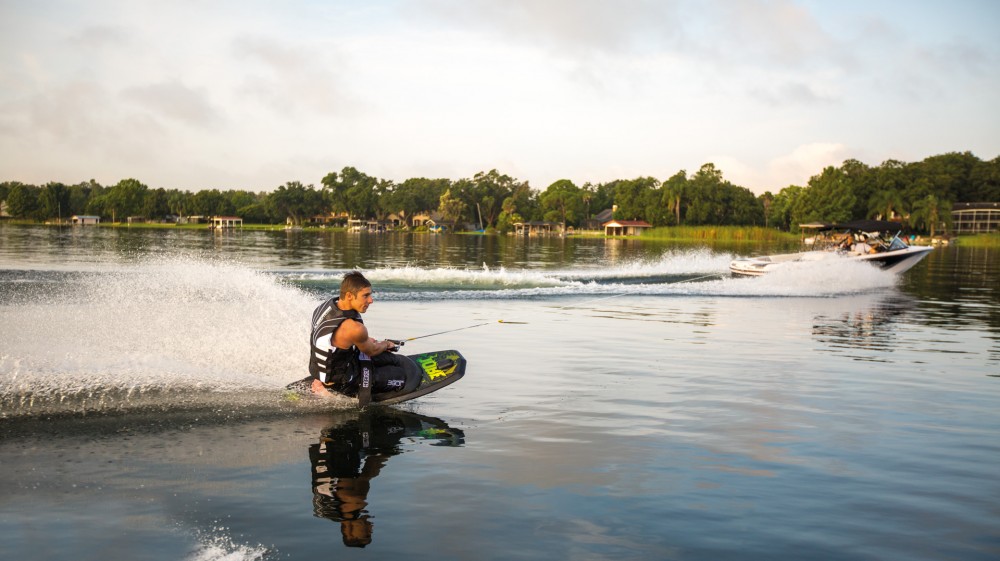
Welcome to kneeboarding—the beginning of your journey into the watersports lineup. Photo credit: Jobe Thrill.
Watersports and wipeouts go hand in hand; I first discovered this at a young age after falling off my kneeboard and finding myself with water shooting up my nose and tears rolling down my face. Although it was discouraging, I knew that once you get passed the wipeouts a whole new arena of action and fun quickly reveals itself (get more general info in Watersports: All Things Towable). Soon it became easier to transition into other watersports, like wakeboarding and wakesurfing. Of course the wipeouts would continue to add up over the years, but I realized that kneeboarding had helped me understand the basics and build the foundation I needed for everything that followed.
Maybe it's just my bias talking, or maybe it’s the fact that it requires less strength and athletic ability, but regardless, kneeboarding serves as the perfect gateway into the world of watersports—especially for kids and novice riders. Take a look at the following tips, and who knows, you might just find your one true love…
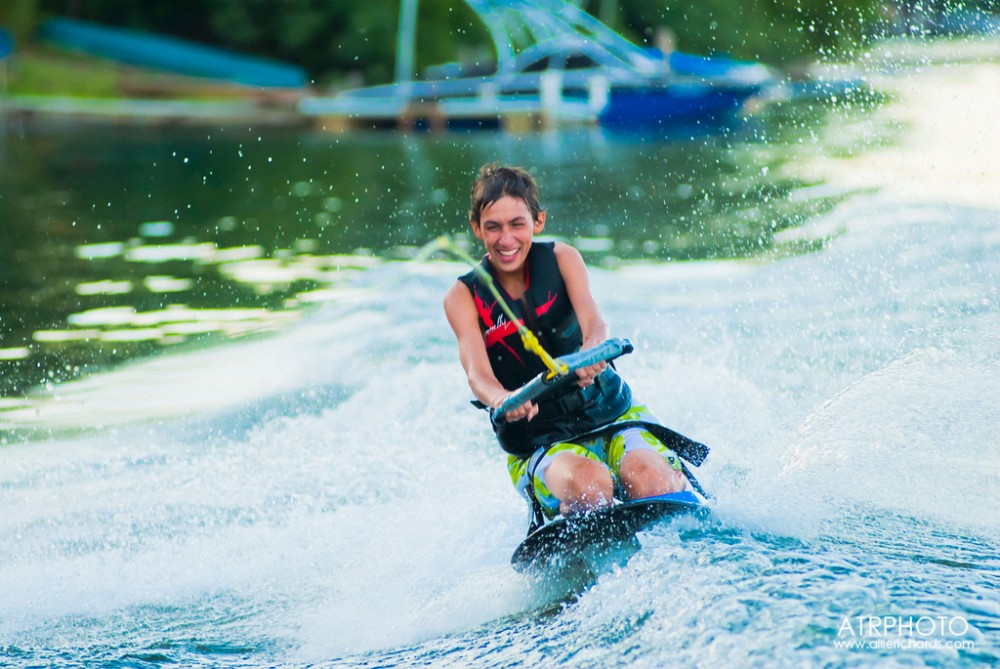
Avoid the wipeouts to discover the fun. Photo credit: Allison Richards.
Steps when learning how to kneeboard:
- Begin by lying flat on your belly on top of the kneeboard while floating behind the center of the boat.
- Grip onto each side of the board with your elbows resting on the kneepad. Your feet should be dangling off the back of the board in the water.
- If your kneeboard has a hook (as many modern kneeboards do), then you can place the handle of the towrope in the hook to get you started. If your kneeboard does not have a hook, you’ll need to hold onto the handle of the towrope with your thumbs pressing down while also gripping onto each side of the board.
- Make sure the towrope is pulled tight and stretched all the way out between you and the back of the boat.
- When the boat slowly begins to move forward, bring your knees up the board until they reach your elbows and center them into the kneepad.
- Once you feel comfortable, you can signal your driver to increase the speed. The appropriate cruising speed varies depending on a rider’s weight and skill level (refer to chart below).
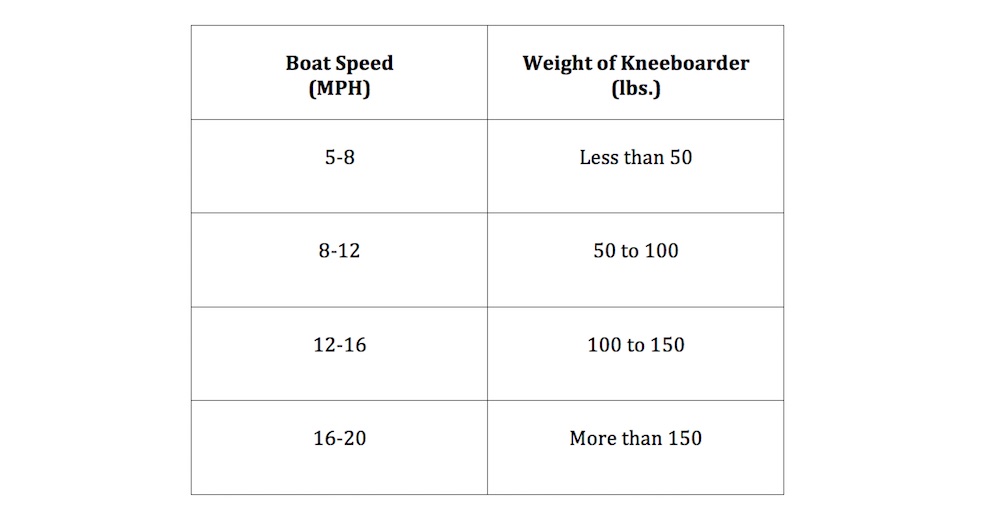
Depending on the size and skill of your rider, drivers need to be conscious of their speed when towing a kneeboarder.
- Rock your weight back onto your heels and situate your body into riding position.
- If your towrope was attached to a hook on the board, pull it out of the hook and hold onto the handle—be sure to keep your knuckles up and your arms stretched all the way out in front of you (the same technique should be used for kneeboards without a hook).
- If your kneeboard has a Velcro strap, be sure to secure the strap over your thighs to lock yourself in place on the board.
- To steer the kneeboard, point your head and shoulders in the direction you would like to turn. This will turn the front of the board and allow you to apply pressure to the edge of the board in the direction you are steering.
Choosing the right kneeboard: recreational vs. competitive
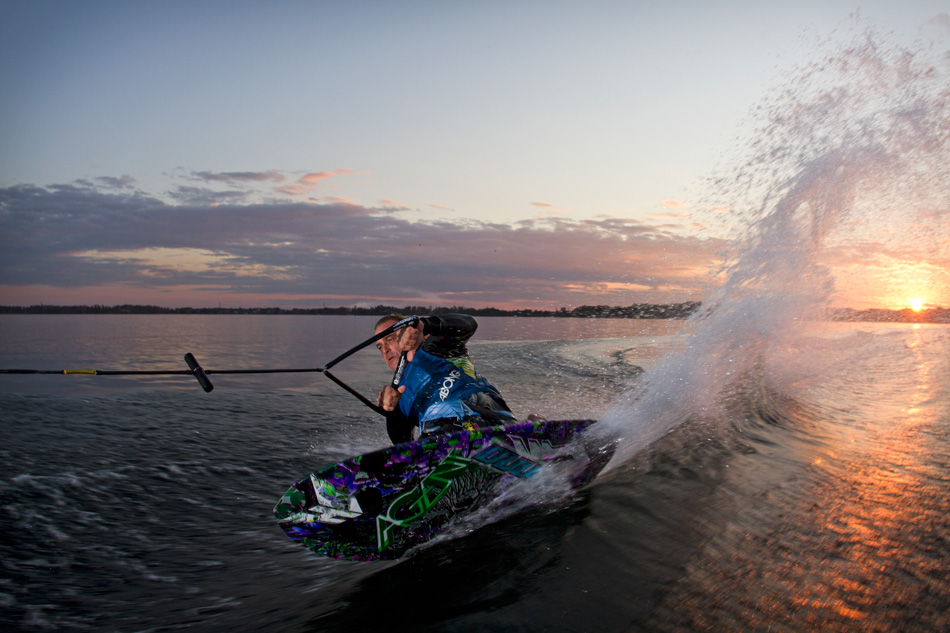
Competitive kneeboards are built to be more compact to allow advanced riders to perform tricks and sharp turns. Photo credit: Centurion Boats.
Most riders will use a recreational kneeboard. This style of kneeboard is constructed with soft, wide edges made of rotational molding. Recreational kneeboards tend to be thicker than their competitive counterpart, in addition to being very buoyant—which helps with floatation following a wipeout. Since these boards are much easier to control, they are the perfect choice for new riders and young children.
Competitive kneeboards, on the other hand, are focused on performance rather than ease. Competitive boards are compression-molded with sharper edges and a thinner, lighter shape. These boards are also not as buoyant as recreational kneeboards so that advanced riders are able to perform deep-water starts. Some competitive kneeboards include “rocker,” which is a slight curve on the bottom of the board. A high rocker makes it easier to turn, while a low rocker indicates a faster board. If you’re looking for a little more of a challenge, a competitive board is the way to go.
For more information on other equipment, such as towropes and lifejackets (also known as PFDs, or “personal flotation devices”), or for tips on communication with your driver and spotter, be sure to check out boats.com’s How to Wakeboard. You might also be interested in How to Stand Up Paddleboard (SUP) and our Essential Towboat Glossary.
You just learned to kneeboard on boats.com,
You’re ready, it’s time, go show your mom.
Grab your board and get ready to shout,
“I can kneeboard, I won’t wipeout!”
Editor's Note: This article was originally published in 2016 and last updated in March 2022.
Advertisement
Advertisement









